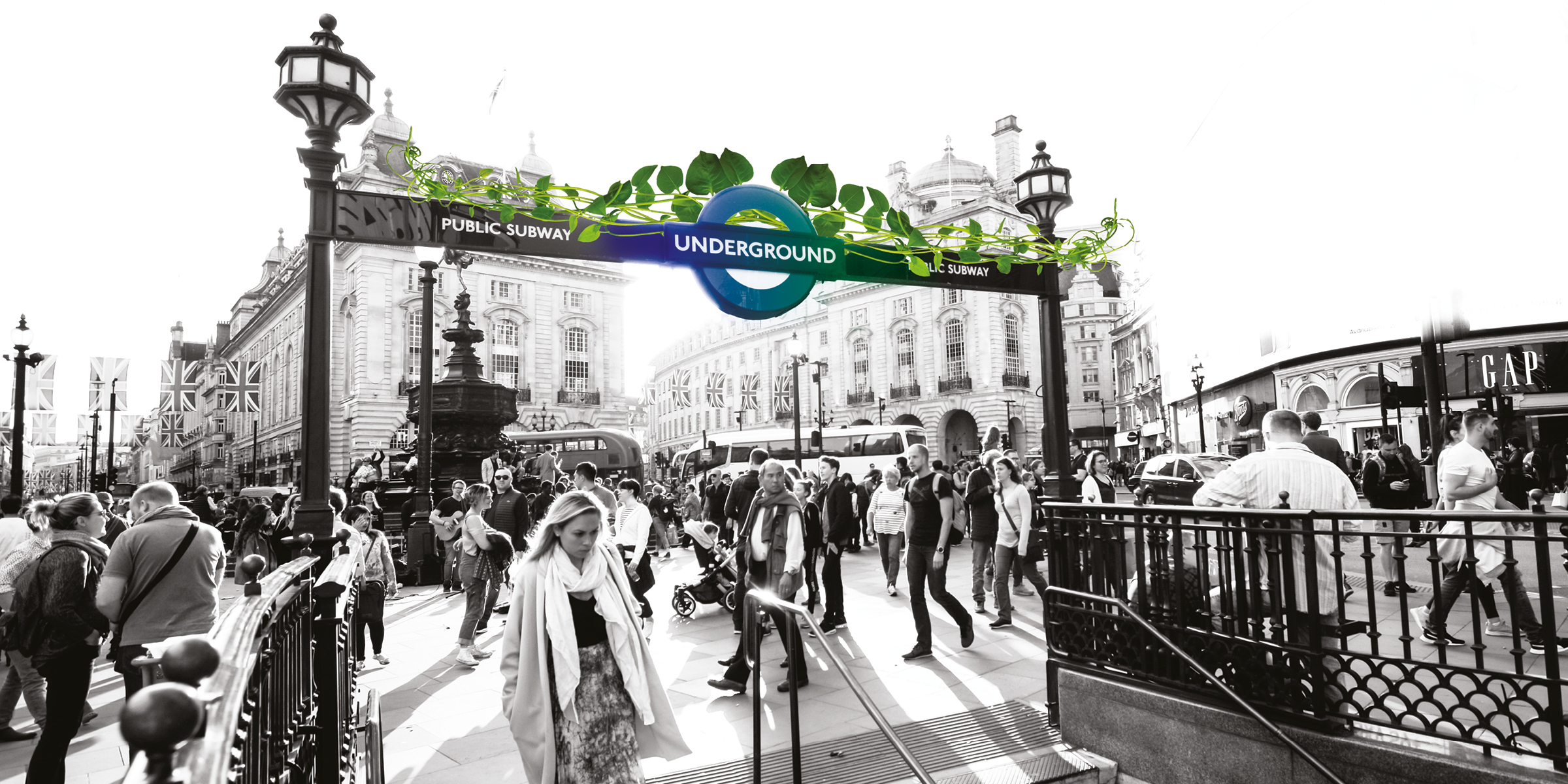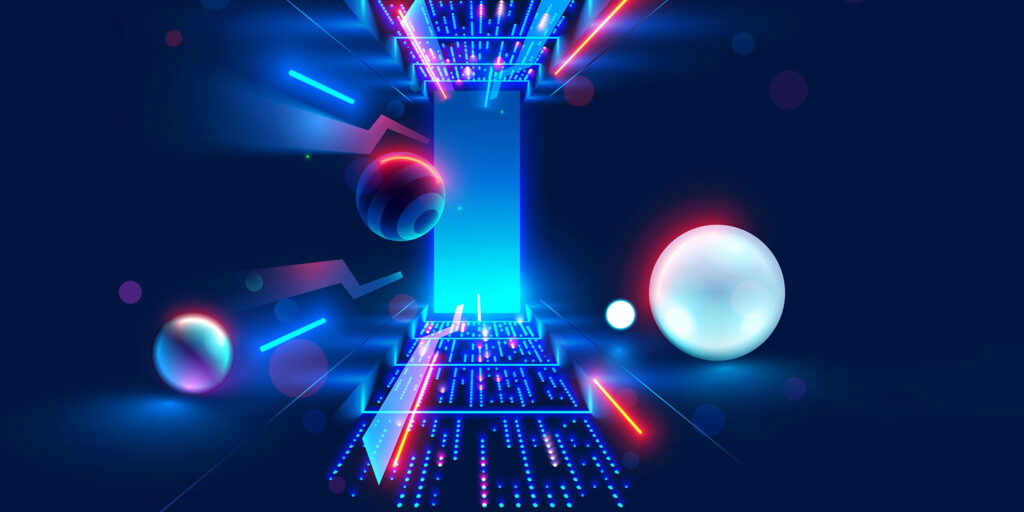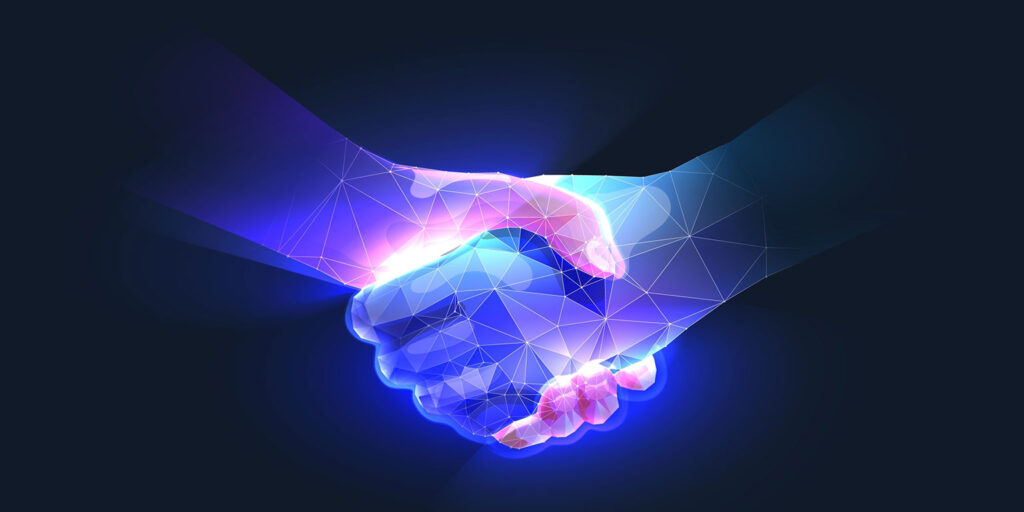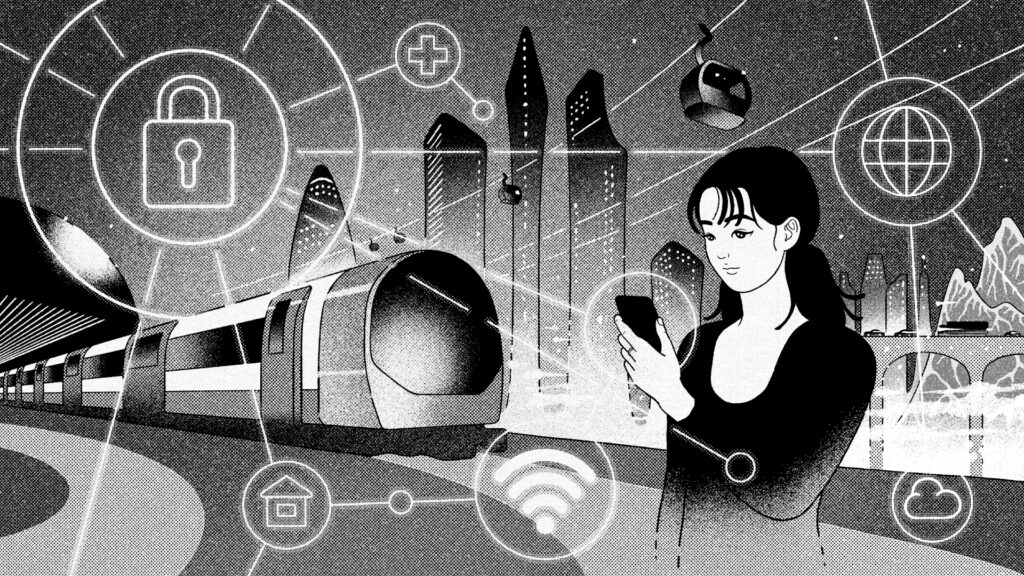It might not be the longest or busiest line of the underground network, but the Piccadilly line has a fascinating history – it made London the first city in the world with an underground railway connecting to an airport in 1977 and, during WWII, helped to house treasures kept by the British Museum. Today, the dark blue line is in the middle of developing a digital twin project that, if successful, could radically transform the efficiency of the whole London Underground network. More crucially, it could also help TfL turn London’s public transport greener by making it carbon neutral within the next decade.
Transportation emissions in the capital decreased by nearly two million tonnes of CO2e between 2019 and 2020 due to lockdown restrictions. Nonetheless, transport is still one of the main sources of greenhouse emissions, and together with emissions from buildings, represents 90 percent of total emissions.
Achieving sustainable public transport is a priority for Transport for London (TfL), and in 2021 the local government body published its Corporate Environment Plan where it outlined the strategy that the UK capital’s transport system will follow to support the Mayor of London’s target of making the city carbon neutral by 2030.
To back the environmental agenda, the Piccadilly line upgrade (PLU) program, part of TfL’s major projects directorate, has been tasked with upgrading the tube line without closing it. Seeing the complexity of the project ahead, TfL has partnered with a start-up, Spinview, to develop a digital twin able to capture environmental data and visualize it through a bespoke platform.
Currently, it’s a prototype, so we are just capturing a slice in time – Daniel Rahamim, TfL
Though relatively new technology, digital twins are already successfully simulating solutions across the likes of the manufacturing, automotive, retail sectors and more. Microsoft has seen wins with its Azure Digital Twins platform aiding wind farms to understand the effect turbines have on local wildlife and ecosystems, as well as assisting Rolls Royce and Proctor and Gamble (P&G) to promote a faster, more resilient manufacturing model.
There’s certainly no sign of let-up in interest. Capgemini has also collaborated with Microsoft on a first-of-its-kind, cloud-native, serverless Azure-based digital twin platform, called Reflect IoD. Recently too, Accenture has made investments in Virtonomy, a MedTech digital twin provider, and Cosmo Tech, a global provider of digital twin simulation technology. Data cloud vendor Snowflake has additionally recently released a Manufacturing Data Cloud that leverages industrial IoT and digital twin technology.
As you might imagine, enterprise is in thrall to this ability to create a digital mirror of a potential or actual real-world system or process. Digital twin technology is arguably perfect for monitoring, testing and editing, without the risk of corrupting or making an error in the real-world instance. Being able to bolster one’s ESG credentials, like TfL is doing, is the cherry on the cake for many businesses today.
Currently in its prototype for TfL, once the digital twin tech is proven it will be used to capture carbon emissions in tunnels and buildings to support the decarbonization of the TfL network and help meet the zero carbon by 2030 target, says Daniel Rahamim, innovation lead and project manager at TfL’s Piccadilly line upgrade project.
“We will be able to identify different emissions hotspots through the platform in a visual manner that will help us deal with them accordingly,” Rahamim adds. The types of data that will be captured to assess emissions include: particulate matter, CO, CO2, volatile organic compounds, butane, natural gas, as well as information that might have been missed during physical inspections, such as heat and noise hotspots.
Data is captured using a customized deep rail sensor device placed at the front of engineering vehicles. In the past, these kinds of devices were focused on capturing surface geometry, explains Greg Roach, Spinview’s CTO.
Using light detection and ranging (LiDAR) technology, a laser is fired, and the device measures the time it takes for the laser to bounce back, which allows the device to know how far away a point is in space. This happens millions of times per second, generating what is called a point cloud – a representation of the surface geometry of a space or of an object.
“When you put all of those individual data points together, it creates a very accurate representation of the geometry and the surface structure of a space,” Roach says, adding that Spinview is “moving that concept into the next generation” with a device that also captures other data channels: “We’re capturing photography and ultimately we’ll be capturing infrared and hyperspectral imaging. Those are things that look beyond the visible spectrum.”
Data is then transferred to the Vision platform, which is hosted by Spinview and will be available to TfL staff. The platform is designed to “democratize” data and make it intuitively accessible and readily available to anyone in an organization, not just engineers.
The ultimate intention is to make the device and the whole digital twin system run constantly so it can offer a high-fidelity digital recreation of the Piccadilly line and can also quantify and chart the impact of changes being made in the infrastructure.
Not just greener
In addition to the benefits that the environmental digital twin can bring to support TfL’s green agenda, Rahamim believes that the technology has great potential to support the delivery of underground projects and help with the tube’s maintenance while improving the health and safety of staff.
The benefits for health and safety through this tech are also significant – Greg Roach, Spinview
“What we hope is that we will be able to use the digital twin to issue more detailed work instructions with imagery, for example, through our software platform,” Rahamim tells ERP Today. “Our goal is that we will have visual data capture going around the network on a constant basis – that will be the live digital twin. Currently, it’s a prototype, so we are just capturing a slice in time.”
In fact, the current partnership between TfL and Spinview to create an environmental digital twin for the Piccadilly line only happened as the relationship between both parties evolved.
Obstacles on the journey
Prior to the pandemic, Rahamim and his colleagues at TfL began engaging with the private sector and SMEs through industry events to gather ideas and find solutions to some of the operational challenges facing tube lines, mainly those around mapping and surveying.
The Piccadilly line is one of the Underground’s seven “deep tube” or “deep level” lines, with tracks going as low as 30 meters below ground in some locations. These lines have circular tunnels bored deep underground: the epitome of what is commonly referred to as “the Tube”.
Deep tube lines use smaller tracks and trains than their subsurface counterparts, which makes them faster – but also presents obstacles at the time of carrying out engineering works.
Issues around GPS and Wi-Fi connectivity in this deep tube environment mean that these lines have traditionally been difficult to map in detail. Surveys can only happen during the planned 1-5am engineering works which means, “realistically”, says Rahamim, “that’s a maximum of four hours a night”.
Surveys are necessary before any new assets such as trains are introduced, or existing ones amended. But the sheer quantity of surveys needed to carry out any works, combined with the small number of engineering hours available and the necessity to follow mandatory processes and standards, result in progress being painfully slow.
The outreach to industry peers started before any upgrade works had begun on the Piccadilly line, which Rahamim said made the process simpler. “It’s easier to bring innovation into a program at its infancy,” he adds. “If you are in full delivery, it is much more difficult to do that.”
The ‘living lab’ environment of the PLU offers the opportunity to introduce innovative projects within the works of the live program of the tube line without the need to have a separate R&D project, explains Rahamim. The technology itself could be used in any of the other underground lines but the PLU program offers the opportunity to embed the project while the tube operates as normal.
It was during the industry outreach pre-pandemic that Spinview brought its digital twin proposal for overcoming some of the challenges involved in the Piccadilly line upgrade.
TfL’s next stop with its digital twin
One of the main advantages that a digital twin could bring to the Piccadilly line (and, if successful, to any line in the underground) is that it would allow staff to carry out remote virtual surveys at any time outside engineering hours and without disruption to passengers. More importantly, a digital twin has the potential of making physical inspection of assets redundant, which Rahamim says would be an important health and safety win.
“Having that visual representation gives the advantage in that you can view everything without having to go down there,” he says. “We can identify if there are any issues around the areas where we’re working, which is very important from a health and safety point of view. By removing boots from the ground and doing it virtually you are increasing the safety of our staff.”
Spinview’s Roach agrees: “The goals of this platform are not only around carbon neutrality – that’s the lead and big banner headline. But the benefits for health and safety through the use of these technologies are also significant.”
Once in use, Spinview’s virtual reality multi-user platform, Agority, will allow TfL staff to carry out virtual inspections of the Piccadilly line as if they were down in the tracks. Using a look alike avatar, staff will be able ‘to walk’ through the tube tunnels remotely as if it were a videogame using real-time data being continuously fed into the system.
“In that environment, you can do things that you could never do in real life,” says Roach about the Agority platform. “For example, if there’s something you need to inspect or measure that’s on the ceiling of a tunnel, in the real world you would need to get a five-meter ladder out and climb up there. In virtual reality, you can simply fly up there.”
If proven successful, the digital twin model could be replicated in the future upgrades of the Bakerloo, Central and Waterloo and City lines – and eventually, the whole TfL network.
“They are very similar projects that will follow a very similar methodology and infrastructure works, which means that we can then transfer the digital twin technology over to the other lines,” Rahamim adds.
The intricacies of the Piccadilly line deep tube environment mean that if the digital twin project works there, it will be easier to replicate the solution in the rest of the underground system.
Rahamim concludes: “If we can do it in the Piccadilly Line, we can do it everywhere.”





